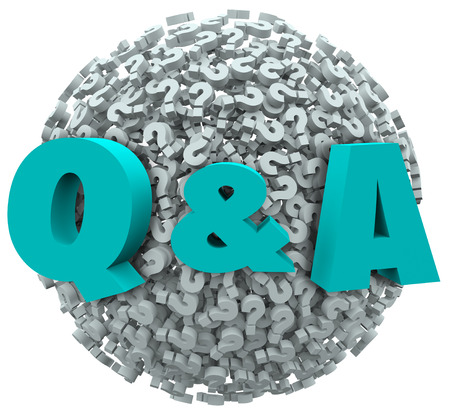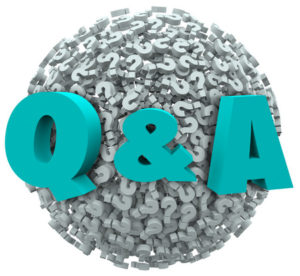
by Beth Levine | Jul 12, 2018 | preparing for a presentation, public speaking
 Communicating effectively is not rocket science (maybe this is why rocket scientists are not known to be great communicators?). It’s rarely considered something that’s terribly complicated or difficult, yet I have spent the better part of a decade and a half “dumbing it down” so that professionals of all types can be more clear, more concise, and more successful at getting their points across to other busy (read: busy-minded) people.
Communicating effectively is not rocket science (maybe this is why rocket scientists are not known to be great communicators?). It’s rarely considered something that’s terribly complicated or difficult, yet I have spent the better part of a decade and a half “dumbing it down” so that professionals of all types can be more clear, more concise, and more successful at getting their points across to other busy (read: busy-minded) people.
The reality is, I’m not actually making it dumber, I’m making it simpler. Less work. Less time. Easier for the speaker (to remember, deliver). Easier for the audience (to pay attention, retain). And the simpler I make it, the more accessible it is to everyone regardless of their level in an organization, and therefore the more widely utilized it is.
On more than a few occasions in the past few months, when I’ve been invited to share my simple framework for communicating effectively, the CEO has been in the room with his or her team for the session. My approach and the SmartMouth methodology have been met with sighs of relief and exclamations of “this is what I have been trying to tell all of you!” In one case, I was met with what could only be described as excitement and joy – clearly, this executive has spent a good bit of time being frustrated with his team’s communication skills.
Since there are a lot of rocket scientists out there – i.e. a lot of smart people with a lot of dense technical knowledge in a variety of fields – I want to share my top 3 pieces of advice for any communicator. You could be a keynote speaker or you could be a participant in a meeting. It doesn’t matter. These 3 are game changers.
1. TMI is the #1 killer.
If I could fix only one thing about how people speak or present, I would attack the “too-much-information syndrome.” In fact, I do attack it, and pretty regularly. Here are some root causes of the problem, see if they sound familiar: presenters who feel the need to prove how smart they are, presenters who love their detail because it fascinates them, presenters who don’t (or can’t?) prioritize their brain dumps, thereby leaving it to their audiences to figure out what’s important.
Information is only valuable and, arguably, relevant when it supports a point. So identify your point first and then pick the information that best supports it (a point is a statement that captures significance or value as a main thought or idea does, or one that summarizes a collection of information). The amount and type of information a speaker chooses to use should be based on the audience – their appetite, their needs/interests, their level of sophistication – not based on what floats the speaker’s boat. If you are sitting with a pile of information that you need to present, ask yourself how you might capture the importance or benefit of all that detail in once sentence and deliver that first, followed by the info.
Finally, less is more. If you can eliminate some information, even better!
2. Serve dessert first.
Life is short, and so are attention spans. Serve dessert, or the point, first. Everything else, like information, is a side dish. Audiences don’t have endless attention to give you, and there are lots of distractions in any given room (some, like devices, give instant gratification when you don’t!). Audiences need a reason, and some context, to hang in there with you.
You can serve dessert first in two ways: First, think about telling your audience upfront what you want them to think, know, do or feel by the end of your talk. And when I say upfront, I mean it’s okay to make this one of your first few sentences – while audience attention is still fresh and on you. You literally can spoon-feed them the impression you hope they’ll take away or the action you hope they’ll take when they leave the room. Second, per the above section on TMI, don’t deliver a truckload of information and then serve up the conclusion; instead, figure out what your conclusion or point is, deliver that first, and then unload your information.
Dessert first!
3. It’s not all about you, it’s about them.
Have empathy! For your audience, that is. Consider the experience you are about to give an audience based on your own experiences. You know what it’s like to sit through a presentation or a talk. You know how often you check out, what you like/don’t like when someone else is at the front of the room, or what visuals you find helpful or enjoyable. Use your own experiences to inform the kind of experience you want to give your audience(s).
No matter how much you love your topic, or no matter how urgent it is that you share your content, think about them – who they are, what they really care about, where they are on the learning curve of your topic, why they’re in the room, and how you might impress them – and then adjust your content accordingly. Their needs and interests are more important than yours. I always say, there’s an unspoken agreement between speaker and audience that, in exchange for their time and attention, you will give them something useful or valuable – which you can determine based on the who, what, where, why and how listed above.
Putting these 3 pieces of advice into practice may take some time, but even just the awareness will help you make some advances in your communication skills and style.

by Beth Levine | Aug 16, 2017 | preparing for a presentation, public speaking, smartmouth talks!
 Stories – or anecdotes, examples, case studies – are the absolute best way to illustrate a point, even in a business presentation.
Stories – or anecdotes, examples, case studies – are the absolute best way to illustrate a point, even in a business presentation.
When crafted well, they illustrate and support your messages better than anything else. Stories make an emotional connection to your audience that sticks with them long after you finish talking.
Here are 3 rules of thumb that apply to using stories in your communications:
1. STORIES NEED TO DIRECTLY SUPPORT A POINT. In other words, you may have a favorite story that you love to tell, and that’s great, but it must be constructed in a such a way that it works its way to a “punch line” that reinforces the message point you are trying to support. You can’t assume the audience will make that connection on their own, you have to spell it out and tie it together for them.
2. PREPARATION IS ABSOLUTELY NECESSARY. Rather than simply reminding yourself to tell a certain story during your presentation, you need to map out the story to avoid getting lost in the details while telling it (every story has more details than you have time to share!). I have watched too many speakers derail a perfectly good 15-minute presentation by telling a story that went on and on until – before they knew it – an additional 10 minutes of air time had been consumed.
3. SIMPLE IS MORE EFFECTIVE THAN COMPLICATED. This is true of most communications but certainly true of stories – despite the temptation to “spin a yarn” for your audience. Unless you’re a comedian or a professional storyteller, you’ll want to keep your stories simple.
Keeping them simple means paring down and prioritizing the detail. Think about composing your stories in this 3-3-3 format:
-
3 sentences describing the situation;
-
3 sentences revealing the dramatic tension (e.g. something unexpected, complications, competing factors); and
-
3 sentences outlining the resolution, which should help you tie back – in that punch line kind of a way – to the point you were illustrating.
And finally, be sure to cue your audience when you’re beginning and ending a story. For those in the audience who might not be paying close attention, you have the opportunity to reignite interest with your own appropriate versions of “Once upon a time” and “The end” – those timeless story cues that signal the open and close of something special.

by Beth Levine | Aug 1, 2017 | preparing for a presentation, public speaking
 Managing Q&A effectively requires you to have a good offensive game strategy. What this means is being mentally ready with an approach for how you want to field and answer questions no matter what you get asked.
Managing Q&A effectively requires you to have a good offensive game strategy. What this means is being mentally ready with an approach for how you want to field and answer questions no matter what you get asked.
Three things are important to keep in mind before we get into Q&A game strategy:
- Q&A is quite possibly your only guaranteed opportunity to know you are answering your audience’s WIIFM (what’s-in-it-for-me) needs, so embrace it!
- You want to field as many questions as you can, from as many audience members as you can, so keep your answers concise.
- It is TOTALLY OKAY not to know an answer, just say so and then offer to find the answer and get back to the person asking.
Your 5-point offensive game strategy:
1. Pause for one or two seconds after the question is asked to collect your thoughts so you can execute on points 2-5 below.
2. Ask yourself, was that a question or a speech? Speeches may not require more than an acknowledgment. If it’s a combination of a speech followed by a question, your best tack is to just answer the question.
3. Don’t focus on the words used in the question, instead search for the theme of the question. In other words, don’t be baited by and then respond to negative language. Listen for the bigger picture theme of the question, it’s a much better springboard to an answer.
4. Find one of your message points that aligns with the theme and begin your answer with a message point. Message points are great springboards, they set context so you can provide meaningful information in your responses.
5. Bridge or redirect, if necessary, back to one of your message points or to your topic. Bridging isn’t evading, it’s getting back on topic.
Q&A can be tricky and it’s always an unknown, but look at it as a triple-bonus – it’s when you get to connect most directly with your audience, it’s when you get to weave in material you might have mistakenly omitted during your presentation, and it’s when you get to reinforce your key points.

by Beth Levine | Jun 19, 2017 | preparing for a presentation, public speaking
 Last week, I delivered four different talks, all of which were the full monty – large audiences, microphones, PowerPoint decks, four different topics. It was daunting, but not because of nervousness or fear of forgetting my content. It was daunting because of all the multitasking involved with, and required of, being a good speaker.
Last week, I delivered four different talks, all of which were the full monty – large audiences, microphones, PowerPoint decks, four different topics. It was daunting, but not because of nervousness or fear of forgetting my content. It was daunting because of all the multitasking involved with, and required of, being a good speaker.
There are multitudes of public speaking worries that are talked about, yet for some reason multitasking is one that gets woefully overlooked. For me, and for many, the multitasking involved in being an effective – let alone, dynamic and compelling – public speaker might well be the most taxing aspect of going to the front of the room.
Here’s a random sampling of what multitasking looks like for me:
Do I look okay?
Am I smiling and appearing welcoming?
Is the sound working?
Am I projecting well enough?
Is the technology working?
Was I compelling in my first 8 seconds?
Am I connecting with this group?
Am I transitioning well from slide to slide, section to section so that it makes sense to them?
Am I moving around the floor too much/too little?
Is my speaking pace okay?
Am I providing enough time for them to digest the material?
Am I looking around the room at as many faces, or segments of the room, as possible?
Should I engage them now, should I maybe break for a midpoint Q&A?
Are they with me, do they get it?
How’s my energy, voice and body?
Am I sensing that the next section of my content won’t really interest them, should I skip it?
Are my glances at the screen subtle and few?
Am I hitting all the points I planned to make and, wait, do I remember what comes next?
Can you relate to some, or maybe all, of these? Are you with me, do you get it? I’m guessing the answers are yes and yes. Is it overwhelming and sometimes literally daunting? Yes and yes.
There’s no single cure or technique for conquering or mastering multitasking, but here are 3 basic tactics that can provide some relief:
1. Know your content. Be fluent with the flow, especially with the actual statements (i.e. the sentences) that are your major message points. Pay attention to and prepare your transitions and pauses.
2. Plan not only your content, but your choreography too – you, your visuals, your body language and gestures, your movement around the stage or room. Know, and then rehearse, your choreography with your content.
3. Let her rip! At a certain point, you need to let go of all your multitasking worries and just be present with your audience. Release yourself to them, talk to them, be with them and trust that you’re prepared and the rest will come.
It all boils down to this: good preparation. And then, even with good preparation under your belt, when it’s show time, you need to let go and be with your audience.
Good luck out there, and let me know how it’s going!
by Beth Levine | Jan 19, 2016 | preparing for a presentation, public speaking
 Use visualization and positive imagery …
Use visualization and positive imagery …
Do breathing exercises …
Tell a joke …
Picture your audience in their underwear … Should you try these techniques? Will they put you at ease? Most important, will they help you engage your audience?
There’s a lot of multi-tasking required of a speaker while delivering a presentation:
- opening properly
- getting the amplification of the microphone or natural projection of the voice just right
- advancing slides or juggling A/V equipment
- making eye contact and employing good body language
- managing time, and
- remembering the flow of the presentation material
Honestly? The last thing a speaker needs is distracting gimmicks on top of the multi-tasking. I prefer the basics: simply focus on connecting with the audience.
In fact, the SmartMouth approach is based first and foremost on the concept of audience-centricity. Or, as I like to say, “It’s not all about you, it’s about them!” Getting back to basics in presentation training means reminding speakers to focus squarely on their audiences from preparation all the way through to the end of delivery.
What does this mean in practical terms? Well, here’s a short checklist to help you understand what I mean:
- When preparing a speech or presentation, think about what interest the audience might have in your topic and what aspect or angle would be most beneficial to them – rather than what interests you.
- Go to the front of the room worrying about giving your audience a good experience – rather than worrying about how you look or whether you sound smart. (You do look good, you made sure of that already! And you are smart, that’s why you’re at the front of the room!)
- Open by acknowledging your audience – offering a compliment, recognizing good work, identifying a common bond – before you introduce yourself or share anything about your background.
- Look at them as if you were trying to draw them in and make new friends. Even move toward them if you can slip away from the podium. Make the people in front of you a more important focus – than yourself and your material.
- Remember to smile, be present, use people’s names if you can, and be yourself. People really like all of those things. It puts them at ease and engages them. And when they’re at ease and engaged, you will be too!

 Communicating effectively is not rocket science (maybe this is why rocket scientists are not known to be great communicators?). It’s rarely considered something that’s terribly complicated or difficult, yet I have spent the better part of a decade and a half “dumbing it down” so that professionals of all types can be more clear, more concise, and more successful at getting their points across to other busy (read: busy-minded) people.
Communicating effectively is not rocket science (maybe this is why rocket scientists are not known to be great communicators?). It’s rarely considered something that’s terribly complicated or difficult, yet I have spent the better part of a decade and a half “dumbing it down” so that professionals of all types can be more clear, more concise, and more successful at getting their points across to other busy (read: busy-minded) people.

 Stories – or anecdotes, examples, case studies – are the absolute best way to illustrate a point, even in a business presentation.
Stories – or anecdotes, examples, case studies – are the absolute best way to illustrate a point, even in a business presentation.
 Managing Q&A effectively requires you to have a good offensive game strategy. What this means is being mentally ready with an approach for how you want to field and answer questions no matter what you get asked.
Managing Q&A effectively requires you to have a good offensive game strategy. What this means is being mentally ready with an approach for how you want to field and answer questions no matter what you get asked.
 Last week, I delivered four different talks, all of which were the full monty – large audiences, microphones, PowerPoint decks, four different topics. It was daunting, but not because of nervousness or fear of forgetting my content. It was daunting because of all the multitasking involved with, and required of, being a good speaker.
Last week, I delivered four different talks, all of which were the full monty – large audiences, microphones, PowerPoint decks, four different topics. It was daunting, but not because of nervousness or fear of forgetting my content. It was daunting because of all the multitasking involved with, and required of, being a good speaker. Use visualization and positive imagery …
Use visualization and positive imagery …

